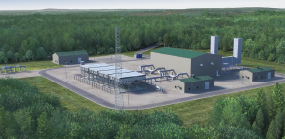This paper demonstrates that the age of a natural gas transmission pipeline, in and of itself, is not the most important factor affecting the safety of that pipeline. This paper’s review of incidents reported to the Department of Transportation’s Pipeline and Hazardous Materials Safety Administration (PHMSA) from 2002 through 2009 found that 85% of incidents occurred irrespective of a pipeline’s age, with just 15% related in some way to the age of the pipeline.
In cases where a pipeline’s fitness for service may degrade with the passage of time, pipeline operators can take action to mitigate the effects of aging. Operators can periodically assess the integrity of such pipelines. Timely repairs based on those assessments will ensure fitness for service. A well-maintained and periodically assessed pipeline can safely transport natural gas indefinitely.
The INGAA Foundation, Inc. retained Kiefner & Associates to investigate the relationship between pipeline age and pipeline safety. The focus of the paper is natural gas transmission pipelines. Still, many of the report’s findings also would apply to pipelines carrying crude oil, motor fuels and other liquid petroleum products. While the natural gas transmission pipeline industry adds new pipelines every year, the majority of natural gas pipelines in the United States were built prior to 1970. Not surprisingly, when an older pipeline fails, there is a tendency to suspect that age played a role in the failure. This can lead to the perception that such pipelines are too old to operate safely.
As part of its research, Kiefner & Associates looked at the various phenomena that can threaten the integrity of a pipeline (i.e., its ability to operate safely without rupturing). It reviewed pipeline ruptures and serious leak incidents reported to PHMSA from the period of 1992 through 2011.
The review of the reportable incidents found that during this recent 20-year period there were 2,059 pipeline ruptures or major leak incidents. The PHMSA “reportable incidents” category was chosen as the primary measure for this report because it was the largest publicly available database of pipeline incidents. From these data, one can calculate the probability of a reportable incident at any random point if an incident were equally likely at any point in the 305,000 miles of natural gas transmission pipelines in the U.S. The incident rate is approximately 0.00034 per mile per year.
The paper’s authors then looked at the incidents based on the decade of construction of the pipeline involved. They found there was no time-dependent degradation of the steel itself. As has been documented in a previous study sponsored by the INGAA Foundation, the properties of the steels used for natural gas pipelines (including the oldest steel pipelines in service) do not change appreciably with time; that is, pipe steel does not “wear out.”
Still, in connection with certain causes of failure, the report’s authors found some higher correlation between age and incident frequency based on the installation period. The authors focused on incidents from 2002 through 2009 because the incident reporting criteria were consistent over that period. Incident frequency from other causes did not exhibit any correlation with age.
The data indicated that older pipelines may be more susceptible to failure if certain kinds of threats are not assessed and mitigated. Factors that contribute to those threats being a higher concern for older pipelines are fully discussed in this paper, as well as mitigation approaches that have been proven to ensure these threats do not affect the safe operation of an older pipeline. These threats include:
• External Corrosion
• Rains/Floods
• Excavation Damage
• Manufacturing Defects
• Component Defects
• Girth Welds
• Seam Welds
• Stress Corrosion Cracking
Key Findings
|
Ultimately, the safety of a particular natural gas transmission pipeline is not necessarily related to its age because: 1. 85% of pipeline incidents reported to PHMSA from 2002-2009 occurred irrespective of the age of the pipeline, with just 15% related in some way to the age of the pipeline. 2. The properties of the steels which comprise natural gas pipelines do not change with time; that is, pipe does not “wear out.” 3. The fitness of a pipeline for service does not necessarily expire at some point in time. 4. The integrity of those pipelines for which the fitness for service may degrade with the passage of time can be assessed periodically. Timely repairs – and other mitigation efforts – based on those assessments will ensure the pipeline’s continued fitness for service. 5. A well-maintained and periodically assessed pipeline can safely transport natural gas indefinitely. |



